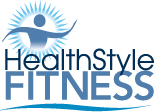Flexible Benefits
Reprinted with permission from The American Council On Exercise.
We take part in aerobic activity to improve our cardiovascular endurance and burn fat. We weight-train to maintain lean muscle tissue and build strength. Those are the two most important elements of a fitness program, right?
Actually, there are three important elements. Often neglected is flexibility training. That neglect is regrettable, because flexibility training:
Allows greater freedom of movement and improved posture
Increases physical and mental relaxation
Releases muscle tension and soreness
Reduces risk of injury
Some people are naturally more flexible. Flexibility is primarily due to one's genetics, gender, age and level of physical activity. As we grow older, we tend to lose flexibility, usually as a result of inactivity rather than the aging process itself. The less active we are, the less flexible we are likely to be. As with cardiovascular endurance and muscle strength, flexibility will improve with regular training.
Stretch For Success
Before stretching, take a few minutes to warm up as stretching cold muscles can cause injury. Begin with a simple, low-intensity warm-up, such as easy walking while swinging the arms in a wide circle. Spend at least five to 10 minutes warming up prior to stretching.
When performing any stretch
Start each stretch slowly, exhaling as you gently stretch the muscle.
Try to hold each stretch for at least 10 to 30 seconds.
Avoid these stretching mistakes:
Don't bounce a stretch. Holding a stretch is more effective and there is less risk of injury.
Don't stretch a muscle that is not warmed up.
Don't strain or push a muscle too far. If a stretch hurts, ease up.
Don't hold your breath.
Fitting Stretching Into a Compressed Schedule
Time constraints keep many people from stretching. Some complain they just don't have time to stretch; others hurry out of their fitness classes before the cool-down exercises are completed. Ideally, at least 30 minutes, three times per week, should be spent on flexibility training. But even a mere five minutes of stretching at the end of an exercise session is better than nothing. And all aerobic activity should be followed by at least a few minutes of stretching.
Here are some tips for fitting stretching into an overstuffed schedule:
If you don't have time to sufficiently warm up before stretching, try doing a few stretches immediately after a shower or while soaking in a hot tub. The hot water elevates muscle temperature enough to make them more pliable and receptive to stretching.
Try a few simple stretches before getting out of bed in the morning. Wake yourself up with a few full-body stretches by pointing the toes and reaching the arms above your head. This can clear your mind and help jump-start your morning.
Take a stretching class such as yoga or tai chi. Scheduling a class will help you to stick with a regular stretching program.
Reprinted with permission from The American Council On Exercise.



